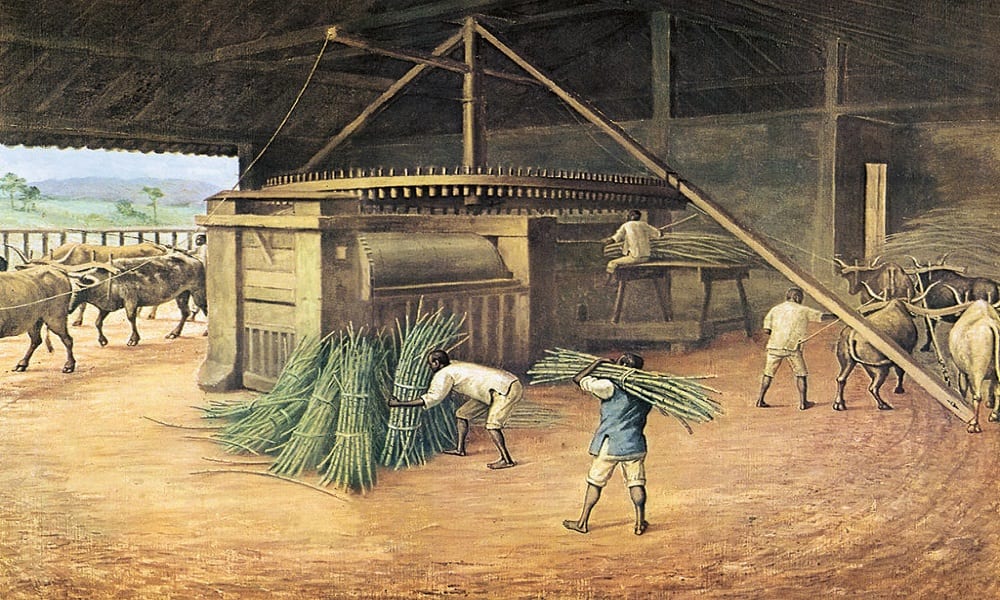[ad_1]
Beginning of the Sugar Cycle
The Sugar Cycle began during the period of colonization, specifically with the creation of hereditary captaincies. Surprisingly, this cycle lasted for centuries, and we are still major sugar producers today. History takes us from the 16th to the 18th century, and the northeast region of Brazil was the epicenter of this phenomenon, especially in the forest zone, ranging from Rio Grande do Norte to Recôncavo Baiano.
The Northeast became not only a production hub, but the dynamic center of social, political and economic life in Brazil. But why did Portugal choose to plant sugar cane in Brazil? This is an intriguing question, but the answer goes back to Portugal's previous experience in growing and trading sugar cane in its colonies, such as Cape Verde and Madeira, as far back as 1440.
The Plantation and the Engenhos
The cultivation system was based on plantation, a method widely adopted in Brazil and also in Spanish America. It was a latifundium system, where extensive areas were dedicated to large-scale planting. Slave labor played a crucial role, and sugar cane monoculture was predominant. The products were intended for sale and export, feeding the international market.
But what about the devices? These were the places where sugar was manufactured, equipped with mills, boilers and other structures. The mill became the epicenter of large properties that included the mansion, the chapel, the slave quarters and the sugarcane fields. The workers, most of whom were slaves, lived in precarious conditions, a sad reality that lasted for a long time.
Decline of the Sugar Cycle
Until the beginning of the 17th century, Brazil experienced continuous growth in sugar production, reaching its peak in the first three decades. However, several events contributed to the decline of this cycle. The Iberian Union in 1580 brought changes, and the war between Holland and Spain directly affected the Brazilian sugar market.
The Netherlands, controlling maritime trade, invaded the most prosperous colonies, such as Pernambuco, disorganizing the sugar market. With the restoration of Portugal's independence in 1640, Brazil lost its influence on the world sugar market. The emergence of other European colonies and Dutch supremacy worsened the crisis, leading to Brazil's economic decline in the 18th century.
The country tried to recover, but competition and difficulties persisted. The sugar cycle collapsed, giving way to a period of stagnation in relation to the metropolis, which would only be broken in the 18th century with the discovery of the gold cycle.
FAQs (Frequently Asked Questions)
1. What was the main reason for the decline in the sugarcane cycle in the Northeast?
The decline of the sugarcane cycle in the Northeast occurred due to competition with other sugar-producing countries and changes in the market, such as the emergence of beet sugar.
2. When did the sugar cane cycle begin in the Northeast?
The sugar cane cycle in the Northeast began with the arrival of the Portuguese in Brazil in 1500.
3. What were the products that replaced sugar cane in the Northeast?
After the decline of the sugar cane cycle, the production of cotton, coffee and other agricultural products began to gain prominence in the region.
4. How was the labor used in the sugar mills?
In sugar mills, the workforce used was mainly made up of African slaves.
5. Did the sugarcane cycle bring benefits to the Northeast?
Yes, the sugar cane cycle generated great wealth for the region and for the Portuguese Crown, boosting the economic development of the Northeast.
References
Sugar cycle – Wikipedia, the free encyclopedia (wikipedia.org)
[ad_2]
